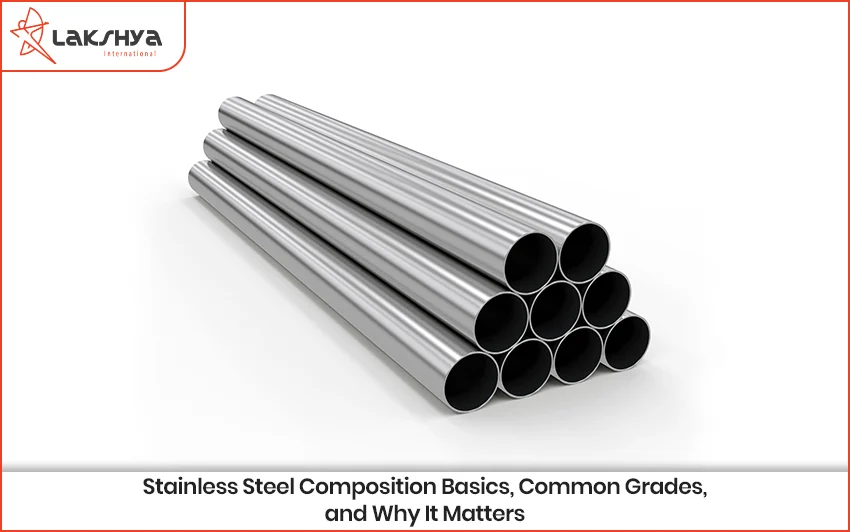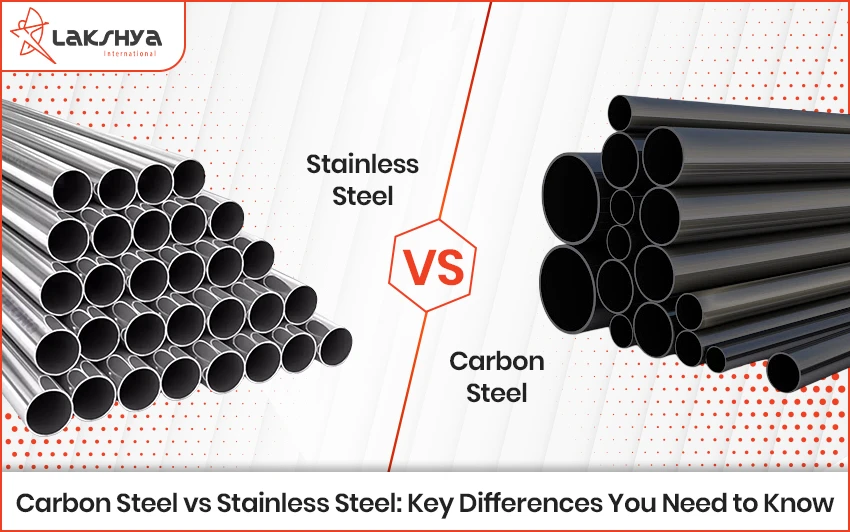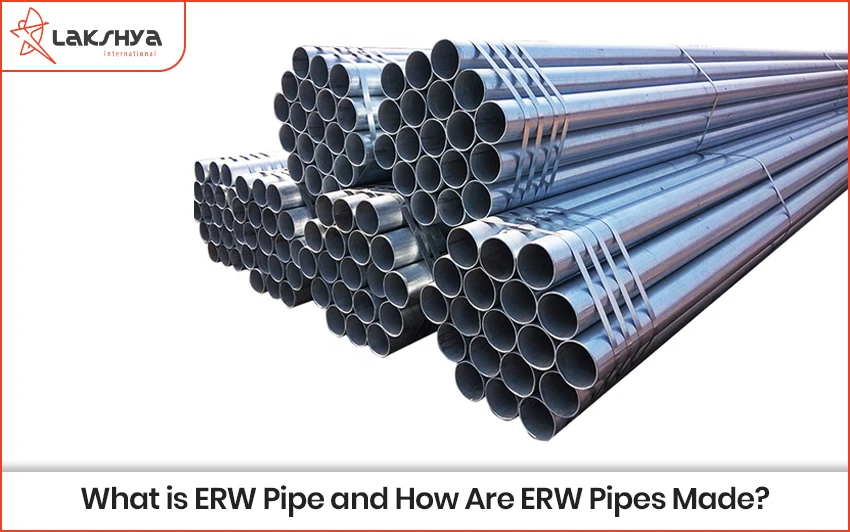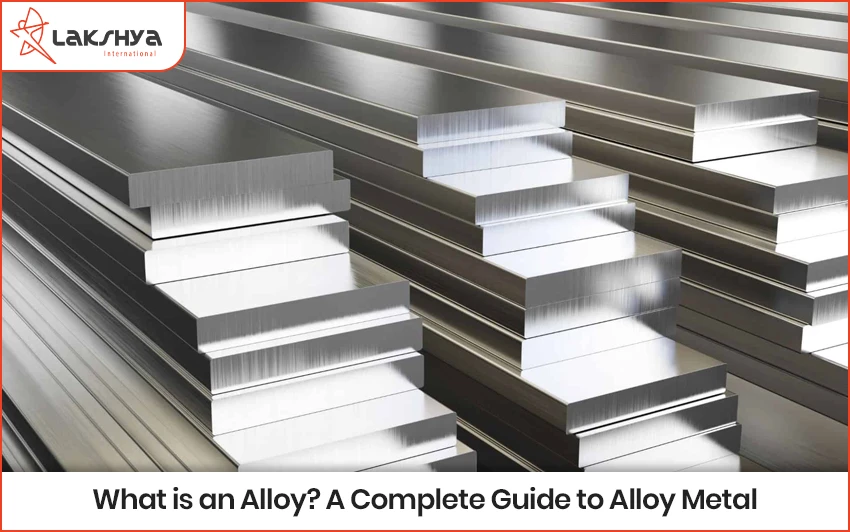What is the Composition of Stainless Steel The Secret to Its Strength
While iron chromium are main players different types of stainless steel get their special powers from adding other ingredients in different amounts. These can include nickel Ni molybdenum Mo carbon C manganese Mn silicon Si and few others. Each one adds something unique giving us lots of different stainless steels each perfect for certain jobs places.
Basic Stainless Steel Composition Chart
| Element | Symbol | What It Does | Typical Amount percent |
| Chromium | Cr | Stops rust helps resist heat damage | 10 5 – 30 |
| Iron | Fe | Main metal gives it structure | The rest |
| Nickel | Ni | Adds toughness makes it easier to shape helps stop rust | 0 – 25 even more in some special types |
| Molybdenum | Mo | Extra protection against certain types of rust | 0 – 7 |
| Carbon | C | Makes it stronger harder | 0 03 – 1 2 |
| Manganese | Mn | Adds strength helps clean steel when its made | 0 5 – 15 more in 200 series |
| Silicon | Si | Helps clean steel resists heat damage adds strength | 0 2 – 3 |
| Nitrogen | N | Makes it stronger helps stop pitting rust | 0 05 – 0 5 |
| Titanium | Ti | Stabilizer stops problems when welding | Usually less than 1 |
| Niobium Columbium | Nb | Stabilizer also stops problems when welding | Usually less than 1 |
Deep Dive Key Ingredients in Stainless Steel What They Do
- Chromium Cr This is star player that makes steel stainless
- Main Job Forms that protective rust proof layer More chromium usually means better rust protection.
- Other jobs help it stand up to heat and add some strength.
- Nickel Ni Makes steel easier to work with tougher
- Main Job Helps create a structure called austenitic that makes steel easy to shape though less likely to break.
- Other Jobs Boosts rust resistance especially against acids helps it hold up at high temperatures Also makes it easier to weld.
- Molybdenum Mo The hero when it comes to stopping specific kinds of rust.
- Main Job: Really good at preventing pitting, crevice corrosion, tiny holes or cracks especially when things like salt are around like in seawater.
- Other jobs make it stronger at high temperatures better against some acids.
- Carbon C can be good for strength but tricky for welding.
- Main Job Makes steel stronger, harder, more resistant to wear Some types of stainless steel need more carbon so they can be hardened with heat.
- Watch Out For In some types too much carbon can be bad especially when welding It can mix with chromium make steel less rust resistant near weld That’s why L types like 304L 316L have very little carbon less than 0 03 percent.
- Manganese Mn Good for strength helps in making steel
- Main Job Helps clean out unwanted stuff when steel is being made It also adds strength and hardness.
- Other Jobs can sometimes be used instead of some nickel like in 200 series types to save money but this might mean its not quite as good at fighting rust or as easy to shape as types with more nickel.
- Silicon Si Another helper in steel making resists heat
- The main job also helps clean steel during production.
- Other Jobs make it better at handling high heat without damage and can make it a bit stronger and harder.
- Nitrogen N A real strength booster
- Main Job Makes stainless steel much stronger especially austenitic duplex types.
- Other Jobs Helps stop pitting rust and keeps austenitic structure stable.
- Titanium Ti Niobium Nb These keep things stable
- These are added to stabilized types like 321 with Ti 347 with Nb They grab onto carbon so it cant cause problems during welding or at high temperatures This lets chromium keep doing its job of fighting rust.
Finding Your Way Common Stainless Steel Types Their Mix
Austenitic Stainless Steels
| Grade | Cr (%) | Ni (%) | Mo (%) | C (%) | Other | What It’s Good For / Where It’s Used |
| 304 | 18–20 | 8–10.5 | – | < 0.08 | – | Go-to all-around champ. Great rust resistance. Food equipment, kitchen stuff, buildings, chemical tanks. |
| 304L | 18–20 | 8–12 | – | < 0.03 | – | Low carbon version of 304. Better for welding; less risk of rust problems near welds. Used when there’s lots of welding. |
| 316 | 16–18 | 10–14 | 2–3 | < 0.08 | – | Has molybdenum for even better rust resistance, especially against salt/pitting. Marine, pharma, chemical plants, medical tools. |
| 316L | 16–18 | 10–14 | 2–3 | < 0.03 | – | Low carbon version of 316. Best choice if you’re welding parts that will face a lot of rust. |
| 321 | 17–19 | 9–12 | – | < 0.08 | Ti ≥ 5×C | Has titanium. Great for very hot places (up to 800–900°C) where rust could be a problem after welding. Used in airplane exhausts. |
| 201 | 16–18 | 3.5–5.5 | – | < 0.15 | Mn 5.5–7.5 | Less nickel, more manganese. Cheaper than 304 for jobs that aren’t as tough. Car trim, appliances, some train parts. |
Ferritic Stainless Steels
| Grade | Cr (%) | Ni (%) | C (%) | Other | What It’s Good For / Where It’s Used |
| 430 | 16–18 | < 0.75 | < 0.12 | – | Fights rust well in mild conditions, shapes okay. Car trim, kitchen sinks, appliances, decorative items. |
| 409 | 10.5–11.75 | < 0.5 | < 0.03 | Ti | Basic low-cost choice. Used a lot in car exhaust systems where it needs to resist heat damage. |
| 446 | 23–27 | – | < 0.20 | – | Really good at resisting heat damage and problems from sulfur. Used in furnace parts and burner components. |
Martensitic Stainless Steels
| Grade | Cr (%) | Ni (%) | C (%) | Other | What It’s Good For / Where It’s Used |
| 410 | 11.5–13.5 | < 0.75 | ~0.15 | – | General-purpose type that can be hardened. Good strength and fair rust resistance. Used in cutlery, fasteners, valve parts, turbine blades. |
| 420 | 12–14 | < 0.75 | 0.15–0.4 | – | Higher carbon than 410, so it can be hardened more. Ideal for surgical tools, knives, and plastic molds. |
| 440C | 16–18 | – | 0.95–1.2 | Mo ~0.75 | Very high carbon—gets hardest among stainless steels. Used in bearings, high-end knives, and valve seats. |
Duplex Stainless Steels
| Grade | Cr (%) | Ni (%) | Mo (%) | N (%) | What It’s Good For / Where It’s Used |
| 2205 UNS S32205 / S31803 |
21–23 | 4.5–6.5 | 2.5–3.5 | 0.08–0.2 | Most common duplex type. Excellent strength and rust resistance. Used in oil & gas pipelines, pressure vessels, chemical processing, pulp & paper, and desalination plants. |
| 2507 Super Duplex |
24–26 | 6–8 | 3–5 | 0.24–0.32 | Higher alloy content for even greater corrosion resistance and strength. Ideal for harsh marine environments and subsea equipment. |
Precipitation-Hardening PH Stainless Steels
* Example 17-4PH AISI 630 Contains circa 17 percent Cr circa 4 percent Ni plus copper niobium columbium Widely used in aerospace chemical processing high-strength shafting.
How Stainless Steel Composition Directly Affects Its Properties
- Corrosion Resistance Primarily driven by Chromium Higher Cr generally means better overall resistance Molybdenum specifically boosts resistance to pitting crevice corrosion in chloride environments Nickel also contributes to general corrosion resistance especially in acidic conditions.
- Mechanical Strength HardnessCarbon is primary strengthening especially in martensitic grades Nitrogen is potent strengthening in austenitic duplex steels Elements like Manganese Silicon also contribute.
- Toughness DuctilityNickel is key for promoting ductile austenitic phase Lower carbon content generally improves toughness.
- Weldability Low Carbon content e g L grades is crucial for preventing sensitization and maintaining corrosion resistance in heat-affected zones of welds Stabilizing elements like Titanium or Niobium also achieve this.
- High-Temperature PerformanceChromiumSilicon improves oxidation resistance at elevated temperatures Elements like Molybdenum Nickel can enhance high-temperature strength creep resistance.
- Magnetic Properties Ferritic Martensitic stainless steels are magnetic Austenitic stainless steels are generally non-magnetic in their annealed state though they can become slightly magnetic after cold working.
- Cost Elements like NickelMolybdenum are relatively expensive Grades with higher percentages of these elements e g 316 Duplex will typically be more costly than lower-alloyed grades e g 430 201.
Applications of Stainless Steel in Various Industries Matching Composition to Need
- Oil Gas Refineries
- Grades 316 316L Duplex 2205 Super Duplex 2507 321.
- Why Resistance to sour service H2S chloride stress corrosion cracking high pressures temperatures Used for pipelines downhole tubing heat exchangers pressure vessels offshore platforms.
- Composition Link High Cr Mo N in Duplex grades for strength pitting resistance Mo in 316 316L for chloride environments Ti in 321 for high-temp stability.
- Construction Engineering Architectural Structural
- Grades 304 304L 316 316L 430 Duplex grades for structural.
- Why Aesthetic appeal longevity low maintenance structural integrity Used for building facades roofing handrails structural supports in corrosive environments.
- Composition Link Cr in all for basic corrosion resistance Ni in 304 316 for formability enhanced corrosion Mo in 316 for coastal areas 430 for cost-effective interior mild exterior.
- Pharmaceutical Food Processing
- Grades 304 304L 316 316L.
- Why Hygienic properties ease of cleaning non-reactivity with food pharma products excellent corrosion resistance to cleaning agents Used for tanks piping valves processing equipment work surfaces.
- Composition Link Sufficient Cr Ni for corrosion resistance formability Low carbon L grades for weld integrity Mo in 316 316L for more aggressive cleaning solutions.
- Railway Subcontractors
- Grades 201 301 high strength austenitic 304 304L 430 specialized ferritics.
- Why Strength-to-weight ratio durability corrosion resistance fire resistance Used for coach bodies underframes interior fittings seat frames catering equipment.
- Composition Link Higher Mn in 201 for cost-effective strength Higher C N in 301 for work-hardening high strength Cr for corrosion resistance.
- Precision Component Manufacturers
- Grades 410 420 440C Martensitic 303 free-machining austenitic 304 316.
- Why Specific hardness wear resistance machinability or corrosion resistance requirements Used for screws fasteners gears shafts surgical instruments valve parts.
- Composition Link Higher C in martensitic grades for hardenability Sulfur addition in 303 for improved machinability.
- Government Public Sector Enterprises Infrastructure Defence Nuclear
- Grades 304L 316L 321 347 Duplex grades specialized nuclear grades.
- Why Long service life reliability in critical applications resistance to specific corrosive media adherence to stringent codes standards Used for infrastructure projects defence equipment nuclear reactor components waste containment.
- Composition Link Low carbon for weld integrity Stabilized grades 321 347 for high-temperature or post-weld corrosion resistance.
Why Understanding Stainless Steel Composition Matters The Strategic Advantage
- Improved Performance Reliability Matching alloy composition to specific service conditions temperature chemical exposure mechanical stress ensures material performs as expected preventing premature failures.
- Cost Efficiency Understanding composition helps avoid two costly mistakes
* Over-specification: Choosing overly alloyed expensive grades when simpler cheaper one would suffice.
* Under-performance Selecting cheaper grade that fails quickly leading to higher replacement downtime potential consequential damage costs. - Enhanced Weldability Fabricability Certain compositions are easier to weld fabricate than others Knowing carbon content e g choosing L grades or stabilized grades or understanding work-hardening characteristics of austenitic steels can simplify manufacturing processes reduce post-processing costs
- Increased Longevity Reduced Downtime The right stainless steel alloy composition ensures material resists corrosion mechanical failure for its intended design life minimizing unplanned downtimes maintenance expenses.
- Ensuring Safety Compliance In many industries e g pharma food nuclear oil gas using stainless steel with correct composition is vital for safety to meet regulatory compliance industry standards.
Indicative Price Range of Stainless Steel Grades Illustrative
| Grade | Avg Price Range INR kg Highly Illustrative | Key Influencing Factors |
| 304 | 180 – 240 | Global nickel rates domestic demand-supply scrap prices |
| 316 | 250 – 330 | Molybdenum higher nickel content marine pharma demand |
| 410 | 100 – 150 | Lower alloying dependent on chromium prices |
| 430 | 90 – 130 | No nickel chromium-based high availability |
| 2205 Duplex | 300 – 400 | Higher Cr Mo Ni N content specialized production |
Key Factors Influencing Stainless Steel Prices
Conclusion Choosing the Right Stainless Steel Grade Knowledge is Power
For engineers, designers and procurement professionals this knowledge is power. It enables informed decisions that prevent costly errors, ensure long-term durability, maintain safety standards, optimize overall project value. Aligning your project’s specific environmental mechanical demands with correct stainless steel alloy composition is the cornerstone of successful material selection.
At Lakshya Steel we are more than just suppliers we are partners in your success We leverage our deep understanding of stainless steel composition its implications to provide not only wide range of high-quality stainless steel products but also expert guidance you need Let us help you navigate options choose right grade perfectly tailored to your industry requirements every single time.
Contact Lakshya Steel today for consultation or to explore our extensive range of stainless steel solutions.
FAQ’s
What is the basic composition of stainless steel?
Why does stainless steel composition matter?
What are common stainless steel composition percentages?
304 stainless steel typically contains 18 percent Cr 8 percent Ni 316 includes 16 percent Cr 10 percent Ni 2 percent Mo for better corrosion resistance.




